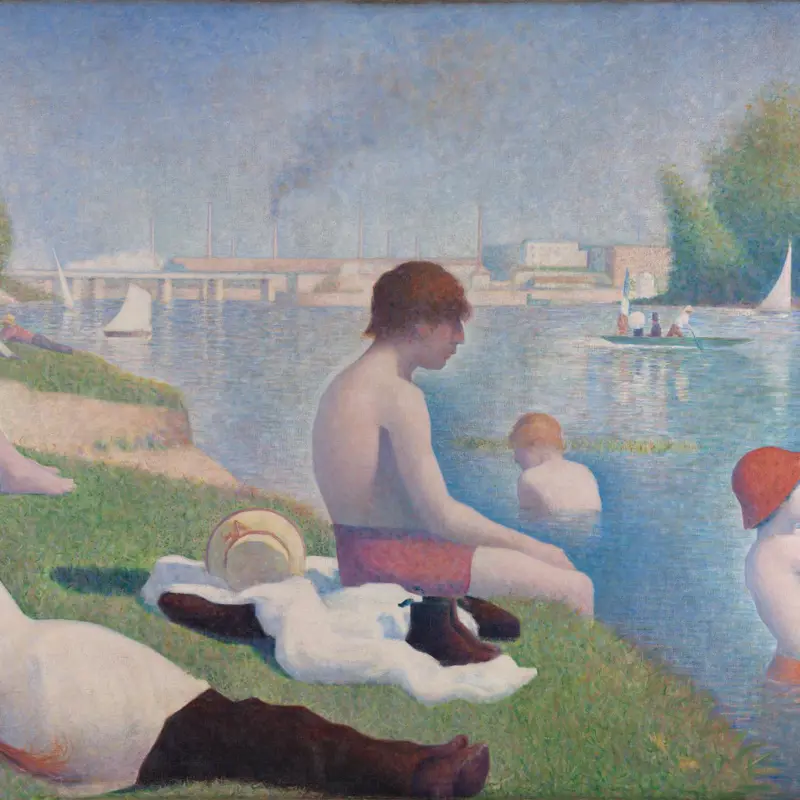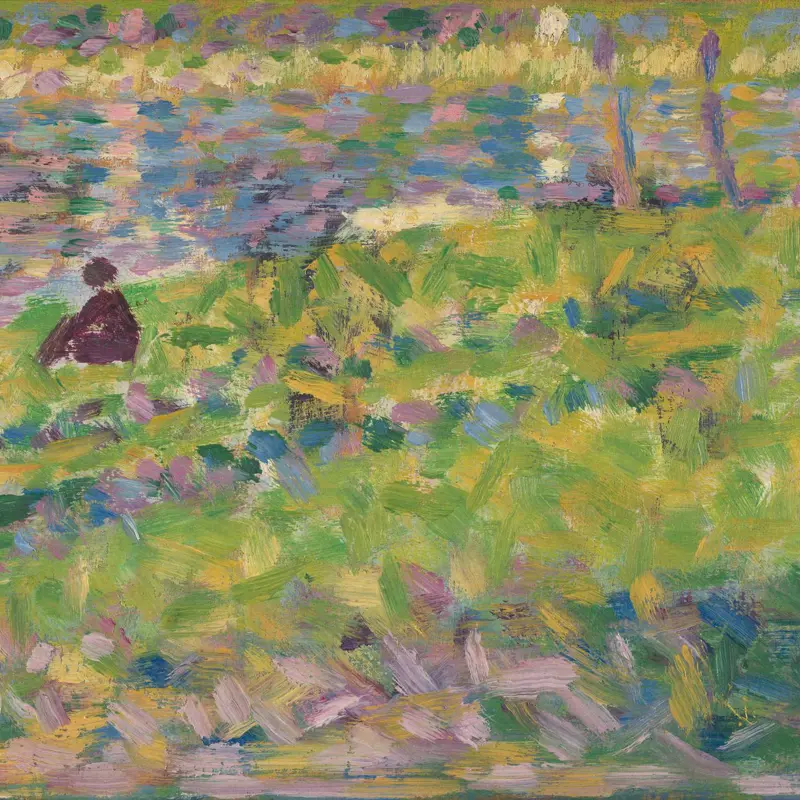Georges Seurat, 'Le Bec du Hoc, Grandcamp', 1885
About the work
Overview
Seurat painted his first coastal scenes and seascapes at Grandcamp in Normandy which he visited in the summer of 1885. The rocky peak of Le Bec du Hoc lay to the east. It was a spectacular geological feature which was greatly reduced by bombardment during the Second World War.
Seurat made an oil sketch on the spot (Canberra, Australian National Gallery), which served as a study for this painting. In 1888, prior to exhibiting the painting for the fourth time, the artist reworked its surface with fine touches of paint, and also added the painted border, modulating the colours in relation to the painting itself.
Key facts
Details
- Full title
- Le Bec du Hoc, Grandcamp
- Artist
- Georges Seurat
- Artist dates
- 1859 - 1891
- Date made
- 1885
- Medium and support
- Oil on canvas
- Dimensions
- 64.8 × 81.6 cm
- Inscription summary
- Signed
- Acquisition credit
- On loan from Tate: Purchased 1952
- Inventory number
- L728
- Location
- Not on display
- Image copyright
- On loan from Tate: Purchased 1952, © 2000 Tate
- Collection
- Main Collection
About this record
If you know more about this work or have spotted an error, please contact us. Please note that exhibition histories are listed from 2009 onwards. Bibliographies may not be complete; more comprehensive information is available in the National Gallery Library.











